The Orthodox Church in Russia
1900 to 1917
The period from 1900 to 1917 in Russia was a time of spiritual rebirth and ecclesiastical reform. Calls for various reforms after almost 200 years of State control of the Church were heard among clergy and laity in the early 1880s. These reform-minded people were especially concerned to see the restoration of the voice of the laity in the Church, the end of the practice of moving bishops frequently from diocese to diocese, the reduction of the power of government consistories (supervisory boards) in each diocese, and the establishment of conciliarity (sobornost) at all levels of Church administration.
In 1905 an imperial decree granted religious freedom in Russia, ending centuries of official State suppression of all religions except Orthodoxy. This was welcomed by the majority of Church people, such as seen in an open letter supporting the decree issued by 32 priests in Saint Petersburg. This letter also called for “a return to the traditional canonical order, based on self-governance and independence of the Church from the State. This can only be achieved by the convocation of a Council of the whole Russian Church.”
In preparation for such a council, Tsar Nicholas II (r. 1894–1917) authorized the formation of a Pre-Conciliar Commission in 1906. The year before, the Holy Synod had asked all the Russian bishops for their recommendations concerning Church reform. Sixty-one out of 63 diocesan bishops responded in favor of significant reform.
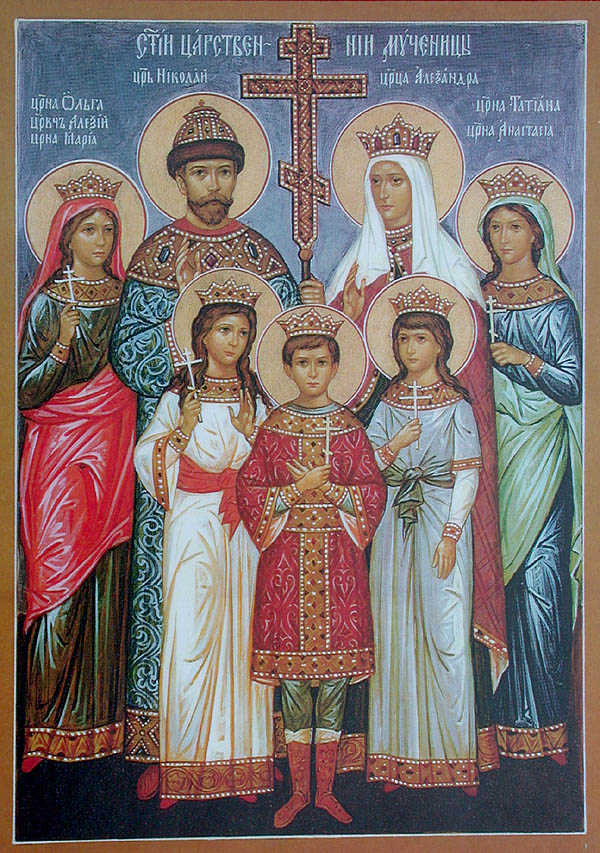
However, in April of 1907, Tsar Nicholas changed his mind, for political reasons, about allowing the Church to hold a great council. The work of the Pre-Conciliar Commission was halted.
At this time Tsar Nicholas and Tsarina Alexandra were coming under the influence of a shadowy lay figure with hypnotic healing powers named Gregory Rasputin (1869–1916). Posing as an authentic Orthodox staretz (spiritual elder), he was actually a Khlyst sectarian who had been condemned as a heretic in Tobolsk. Especially because he was able to give relief to the royal couple’s hemophiliac son, the Tsarevich Alexis, he was eventually granted great influence in the affairs of the Royal Family and the Church, to the discredit of both. He was assassinated in December of 1916.
On March 2, 1917, under great pressure for political and ecclesiastical reform, and with Russia suffering severe military setbacks in the Great War, Tsar Nicholas abdicated. A provisional democratic government was set up, led by Alexander Kerensky (1881–1970), which allowed the Church again to undertake preparations for the long anticipated All-Russian Council.
The Council of Moscow, 1917–1918
After much debate, it was decided that each diocese would send delegates to the Council from among the clergy and the laity—as at the First All-American Sobor in Mayfield, Pennsylvania, in 1907—to sit in council with the bishops, who would make the final decisions in matters of Church doctrine and practice. In August of 1917, in the shadow of the impending Bolshevik Revolution, the Council convened in Moscow—rather than in Saint Petersburg, the headquarters of the Holy Synod ever since the Patriarchate was abolished under Emperor Peter I in 1721. This in itself indicated a strong desire on the part of the Church to return to its traditional patterns of life and organization before the era of the Petrine Reform.
The Council ’s most momentous act was to restore the patriarchate to the Russian Church. On the morning of November 6, 1917, after vigil and prayer, an elderly monk drew the name of one of the three elected nominees from a chalice in front of the icon of the Kazan Mother of God. The name of Archbishop Tikhon (1866–1925) was drawn. Hence, the former primate of the American archdiocese became the first patriarch of the Russian Orthodox Church since Patriarch Adrian died in 1700.
The Council continued to meet for nearly a year longer, despite the opposition of the Bolsheviks, and a number of significant reforms were passed before it had to close. These included the formation of a standing Synod of Bishops, and a Higher Church Council with lay participation to assist the Patriarch; bishops in every diocese to be elected by diocesan councils comprised of clergy and laity; bishops normally to be allowed to stay in their original diocese for life; sermons to be given at all services in the vernacular language; the restoration of internal autonomy to the monasteries; and women being encouraged to become members of parish councils.
Unfortunately, the Soviet oppression of the Church prevented many of these reforms from being put into practice. Interestingly, the dioceses which were able to elect their own bishops were most often the ones who stayed loyal to the Patriarchate during the years of Communist rule.
Patriarch Tikhon (r. 1917–1925)
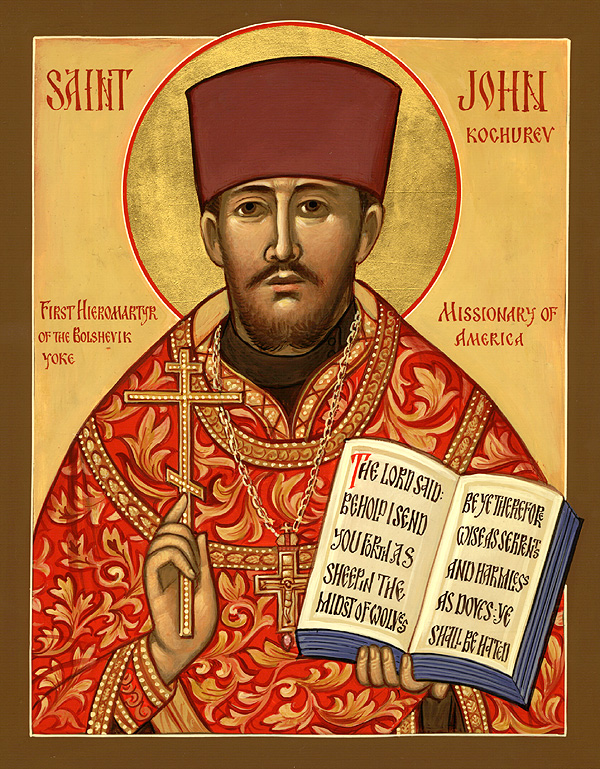
From the very beginning, Patriarch Tikhon struggled to defend the life and organization of the Church in the face of fierce persecution by the Bolsheviks. At almost the same time that Saint Tikhon was selected as the new patriarch, Saint John Kochurov (1871–1917), who as a newly ordained priest had served for 12 years as head of the parish in Chicago, Illinois, became the first priest to die as a martyr at the hands of the Bolsheviks. In 1994 the Russian Church glorified him as “First Hieromartyr under the Bolshevik Yoke.”
On January 19, 1918, with the full approval of the Great Council in Moscow which continued to meet, Patriarch Tikhon excommunicated and anathematized all “the enemies of the Church.” He cried out to them, “Madmen, recover your senses! Cease your bloody vengeance. Your actions are not only cruel, they are satanic.”
This action increased the fury of the revolutionaries against the Church, which they despised for its close alliance with the hated Tsarist regime that they had dedicated their lives to overthrowing. According to James Cunningham, “On January 23, 1918, they issued a decree which separated the Church from the State, took away all schools from the Church, expropriated all ecclesiastical properties, suspended all government subsidies to Church organizations, denied the Church its status as a legal entity, and totally secularized the state.”
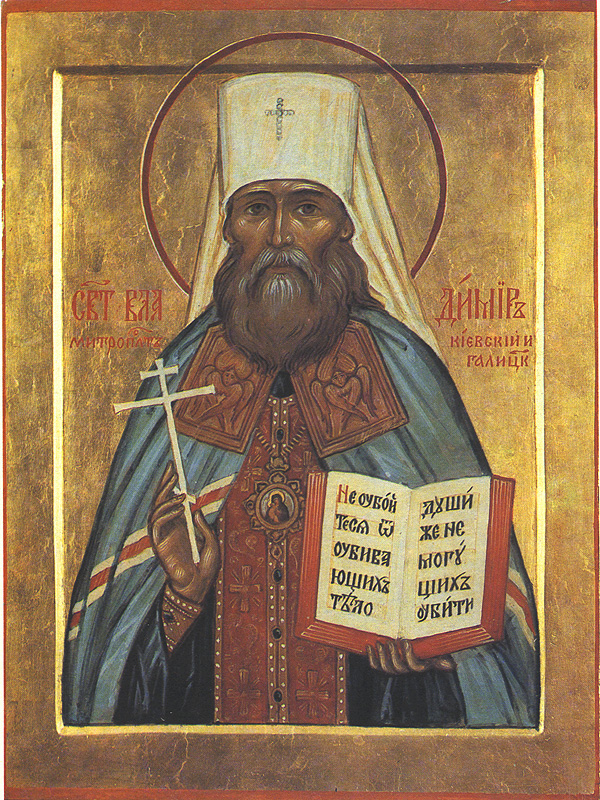
Two days later, Metropolitan Vladimir of Kiev (1848–1918) became the first bishop to be executed by the revolutionaries. During the course of the next three years, at least 28 bishops were murdered, thousands of clergy were imprisoned or killed, and some 12,000 laymen were killed for religious activities. On the night of July 17, 1918, Tsar Nicholas and his entire immediate family were treacherously and shamefully executed at Ekaterinburg; and the next night Grand Duchess Elizabeth (1864–1918) and other members of the extended Royal Family were murdered near Alapaevsk. They all were recognized as saints among the new martyrs, confessors, and passion-bearers of Russia by the Russian Church in 2000.
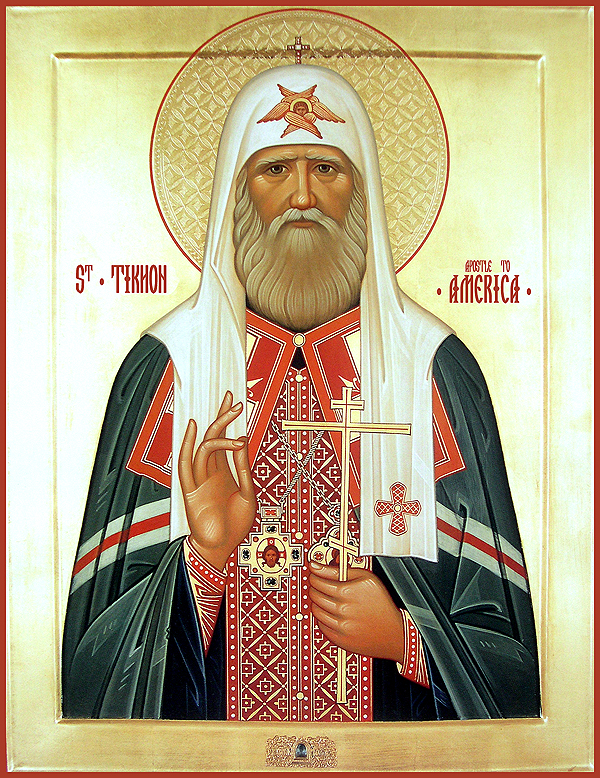
On May 12, 1922, Patriarch Tikhon was imprisoned for his refusal to give up consecrated Church vessels which the government demanded during that time of famine and civil war, ostensibly to sell to help feed the poor. He had offered the unconsecrated treasures of the Church to the Bolsheviks, and he had promised as well to raise money for the afflicted through free will offerings of the faithful that would equal the amount which the government was demanding, as long as such offerings would be distributed to the people directly by the Church. He was released from prison in June of 1923, upon making a statement of loyalty to the Soviet government—a step he felt he had to take for the good of the Church.
In his struggles and trials, the patriarch tried to follow a path of political neutrality while defending the rights of the Church. He died in 1925 under mysterious circumstances in a hospital in Moscow, as a confessor for the Faith. In 1989, Patriarch Tikhon was canonized by the Moscow Patriarchate as “Saint Tikhon the Confessor, Patriarch of Moscow and All-Russia, and Enlightener of North America.”
The Living Church
Patriarch Tikhon also had to struggle against the Living Church, a group of liberal churchmen supporting the Soviet regime, some quite enthusiastically, who took over the patriarchal administration. This usurpation, fully endorsed if not actually instigated by the Bolsheviks, was begun shortly after Patriarch Tikhon was imprisoned in May of 1922. The Living Church was recognized by the Soviet State as the official Russian Church, and it was used by the State against those remaining faithful to Patriarch Tikhon. This group of “Renovationists” tried to change various teachings and practices of the Orthodox Church, such as allowing bishops to be married; the Renovationists were hailed by some in the West as bearers of the Reformation in Russia.
At first the Living Church gained some widespread support. But when it held a council in May of 1923 that attempted to depose Patriarch Tikhon, many of its supporters were alienated. At that point the Soviets realized that the Living Church would not work as a means to bring the Orthodox Church as a whole under their control. So they stopped supporting it, and by the late 1920s its influence had greatly waned, though elements of it lingered on into the 1940s.
Russian Emigration to Western Europe
Quite a number of young Russian intellectuals, at first enamored with leftist political ideology, made their way “from Marxism to Idealism” and on to an affirmation of the Orthodox Faith. Some of them, such as the philosopher P. B. Struve (1870–1944), the theological writer and professor of dogmatics Archpriest Sergei N. Bulgakov (1871–1944), the existentially-oriented religious philosopher and editor Nicholas A. Berdyaev (1874–1948), the essayist S. L. Frank (1877–1950), and the religious historian George P. Fedotov (1886–1951), became leading figures in the Russian émigré community in Western Europe that coalesced in the early 1920s. Some one million Russians, mostly intellectuals and professionals, fled from Russia in the throes of the Bolshevik Revolution and afterwards. This remarkable group produced some 10,000 books and 200 journals in many different fields in the years between the two World Wars.
These Orthodox Christians did much, through their writing and speaking, to introduce to Western Europe the riches of Orthodox thought and life. The academic center of this Orthodox flowering in the West was the Saint Sergius Institute in Paris, founded in 1925.
The Era of Most Severe Persecution
With the death of Patriarch Tikhon in 1925, the Church in Russia entered its darkest hour. Metropolitan Sergius (Stragorodsky) (1867–1944) served as Deputy Locum Tenens of the Moscow Patriarchate from 1927 to 1943. This was the time of Stalin’s purges, when literally millions of people, including thousands of clergy, were imprisoned, exiled, and killed. Stalin’s constitution of 1936 officially called for “freedom of religion and freedom of anti-religious propaganda,” yet hundreds of churches, monasteries, and schools were closed. What little Church life still remaining was limited exclusively to liturgical services. The persecution of the Church by the State was fierce and relentless.
Relative Freedom during the Second World War
A period of relative freedom came to the Russian Church during the Second World War. The government needed the Church’s support for the war effort against Hitler. In return for rallying the people to fight for the fatherland, the Russian Church received concessions from the State. Many churches, monasteries, and schools were reopened. In 1943, Stalin allowed the Church to hold a council, which officially elected Metropolitan Sergius as patriarch. Upon Patriarch Sergius’s death in 1944, Metropolitan Alexei (Simansky) (r. 1945–1970) was elected to replace him at another council, solemnly conducted in the presence of a host of foreign ecclesiastical dignitaries.
The Return of Persecution
In the late 1950s and early “60s, the Soviet State under Nikita Khrushchev again began to severely persecute the Orthodox Church in Russia. There were no violent purges as in the Stalin era; rather, this new persecution came in the form of “administrative” measures with supposedly legal foundation. There was the closing of schools and churches—from 22,000 churches open in 1960 to 7,000 in 1964. There was heavy taxation and restricted registration of clergy. And severe punishments were meted out against churchmen for trivial or nonexistent “crimes.”
In 1961, new decrees of the government gravely limited the powers of the parish priests by giving all legal and administrative authority in the churches to the lay councils, the “twenty” members required by Soviet law for the formation of a local corporation with the right to request a church building for worship. The pastors were thus reduced to mere liturgical functionaries who had no official authority to do any further ministry among their flocks.
All of these “administrative” measures were an attempt to destroy religious faith—which, according to Marxist doctrine, should long ago have died a natural death in the USSR. Official atheist propaganda of the period shows a grave concern over the persistence of religion in the land.
Churchmen Appeal to the Soviet Authorities
Because the leading members of the hierarchy of the Russian Church were silent and passive in the face of this new persecution of the Church by the State, voices of protest began to arise from various Church members in what became known as the Dissident Movement. The most powerful appeals for just and proper action concerning the Church came from Archbishop Yermogen of Kaluga and the priests Nikolai Eshliman (1928–1985) and Gleb Yakunin (b. 1934). These spokesmen on behalf of the rights of the Russian Church sent open letters of criticism to both Church and State officials in December, 1965. These letters appealed to Soviet law that technically allowed for religious freedom, as well as to the statutes of the Russian Orthodox Church promulgated at its council in 1945. As a result, together with a number of lesser known colleagues, these priests were deprived of their ecclesiastical positions. Nevertheless, agitation among the clergy and laymen for reform in the Russian Church, for strong leadership and just treatment, continued until the fall of the Soviet government in 1991.
Pasternak and Solzhenitsyn
In addition to churchmen, men from academic and literary fields also made appeals in the name of faith and freedom in Russia. Boris Pasternak (1890–1960) and Alexander Solzhenitsyn (1918–2008), both Nobel Prize winning authors and Christian believers, were in this number. Solzhenitsyn addressed his famous Lenten Letter to Patriarch Pimen in 1972. This letter was extremely critical of the policies and actions of the Russian Church in the face of State control. It received great international attention, and caused much controversy within the Russian Church. It received, however, no official response from the Moscow Patriarchate.
Patriarch Pimen
After the death of Patriarch Alexei I in 1970, Archbishop Pimen (Izvekov) (r. 1971–1989) was chosen as primate of the Russian Church at its council in 1971. This same council officially confirmed the administrative decrees of the State, promulgated in 1961, which at that time had been strongly opposed by many of the parish clergy. Patriarch Pimen, who made visits to the other patriarchates while patriarch of Russia, was silent in response to all criticism of Church leadership in Russia. He continued the policies of cooperation with the Soviet authorities that had been followed by Patriarchs Sergius and Alexei before him—including refusing to admit the existence of State persecution of the Church in Russia.
Glasnost, and Freedom to Rebuild
Preparations for the celebration of the millennium of the Christianization of Kievan Rus’ in 1988 coincided with a general relaxation of the authoritarianism of the previous decades, under Premier Mikhail Gorbachev”s policy of glasnost (openness). The Church gained more freedoms as the Iron Curtain began to fall. Once it collapsed, in 1991, the Church was free to recover and rebuild.
Patriarch Alexei II
After Patriarch Pimen’s death in 1989, Metropolitan Alexei (Ridiger), from Estonia, was elected the new Patriarch. He guided the Church through the new post-Soviet era when millions of Orthodox came back to the Church, thousands of churches and monasteries were reopened and refurbished, and a new national constitution provided for full freedom for the Church, now fully recognized as a legal entity. The Church was greatly challenged in this time with ministering to so many new members, with very strained relations with the Uniates, especially in western Ukraine, and with various ultra-conservative right-wing groups.
Patriarch Kirill
A month after Patriarch Alexei’s death in December of 2008, Metropolitan Kirill (Gundyayev) (b. 1946) was elected as the new Patriarch of Moscow and All Russia. By 2010 he had taken steps to develop closer relations with the Ecumenical Patriarchate, including supporting the 12 Orthodox ecclesiastical assemblies that Patriarch Bartholomew was setting up around the world. Metropolitan Kirill continued to lead the Patrarchate of Moscow and All Russia in 2013.
Japanese Autonomy
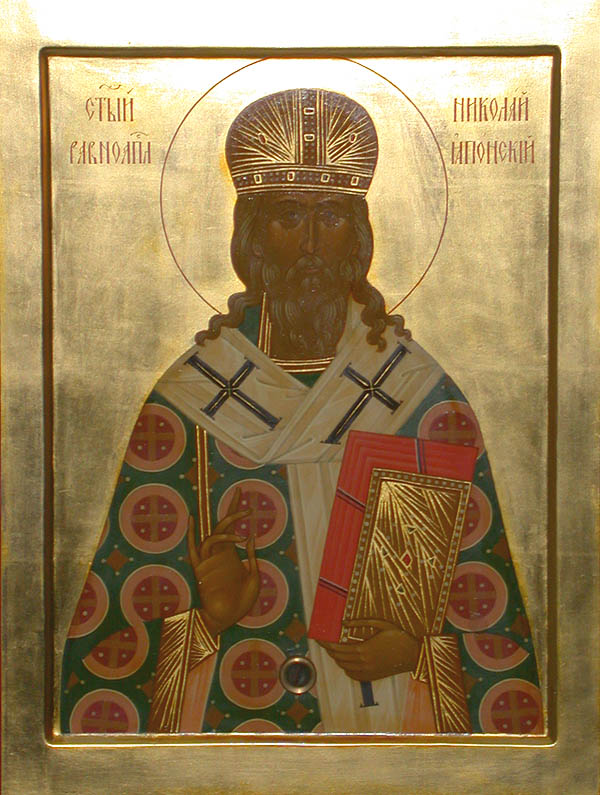
Among the last acts of Patriarch Alexei I was the official declaration in 1970 of the autonomy of the Orthodox Church in Japan. Bishop Vladimir (Nagosky) (1922–1997), the American-born primate of the Japanese Church, which had been affiliated with the American Metropolia since World War II, was made Metropolitan of Tokyo. The Moscow Patriarchate reserved the right to confirm the election of the Japanese primate and to participate in his consecration, but in all other respects the Church in Japan became self-governing. At the time of Japanese autonomy, the founder of the Church in Japan, Archbishop Nikolai (Kasatkin) (1836–1912), was glorified as a saint by the Russian Church.
In 1972, Metropolitan Vladimir returned to the United States, and the native-born, American-educated Metropolitan Theodosius (Nagashima) (1935–1999) replaced him as primate of the Japanese Church. He was followed by Metropolitan Daniel (Nushiro) (b. 1938), who was born into a Japanese Orthodox family. Installed by Patriarch Alexei II of the Church of Russia in 2000, Metropolitan Daniel was still guiding the Japanese Church in 2013. It numbers about 30,000 faithful.
